If you are searching for a delicious way to use leftover turkey, you are going to love this turkey stew recipe. A thick and hearty, easy to make stew that is ready to eat in under 30 minutes.
Not to mention that this is a healthy recipe that uses fresh ingredients that you most likely already have in your kitchen leftover from your Thanksgiving dinner. Onions, potatoes, carrots and celery are the key vegetables in the stew.
When combined with a little broth, seasonings and of course turkey, it makes for a delicious meal that the entire family can enjoy. And with very little effort!
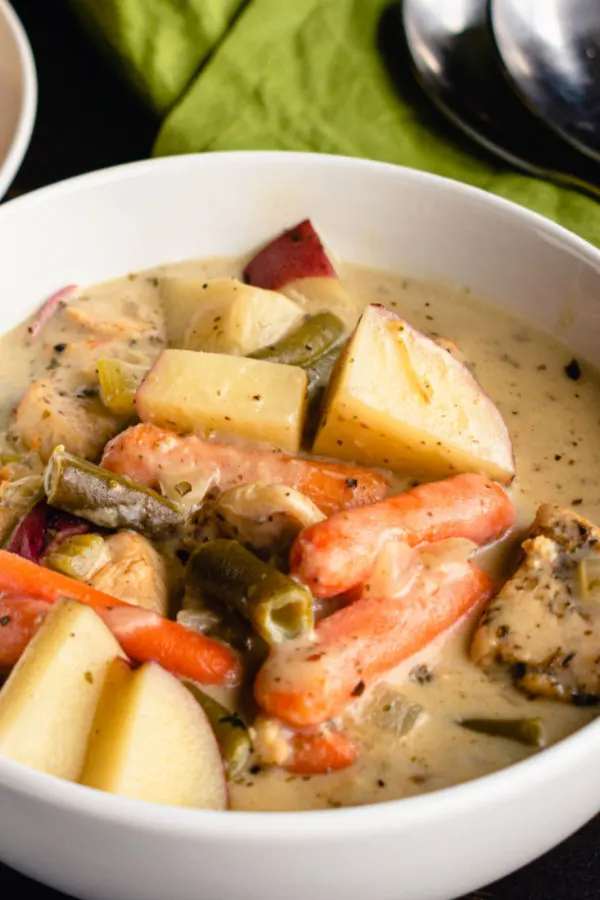
Best of all this is a very versatile recipe. You can use whatever vegetables that you have on hand.
For instance, if you have leftover fresh or cooked green beans, you can add them to the stew as well. However, if you are using cooked green beans be sure to add them at the end of the recipe so they don’t get too mushy.
But don’t just stop there. You can add just about any vegetable to a stew recipe. However, the key here is to add the vegetables to the stew so that they cook and become tender without falling apart.
Root vegetables take longer to cook and therefore will need to be added with the potatoes and onion. And more tender vegetables such as winter squash, zucchini and leafy greens such as kale and spinach will need to be added later.
Although you can add whatever vegetables that you prefer, I have included my favorite stew recipe below. However feel free to make your own adaptations with the ingredients that you have on hand.
Leftover Turkey Stew Recipe
*Specific measurements and complete recipe instructions are located in a printable recipe card at the bottom of this article. However, be sure to continue to read the tips and tricks to making this recipe below.
INGREDIENTS
- ¼ cup butter
- 1 onion diced
- 1 clove garlic, minced
- ¼ cup flour
- 1/2 teaspoon sage
- 1/2 teaspoon thyme
- 5 cups chicken broth or stock
- 4 medium Yukon gold potatoes, cut into 1-2 inch sections
- 8 baby carrots, cut into thick chunks
- 2 ribs celery, sliced
- 1 bay leaf
- 2-3 cups cooked turkey, diced
- 1/2 cup milk
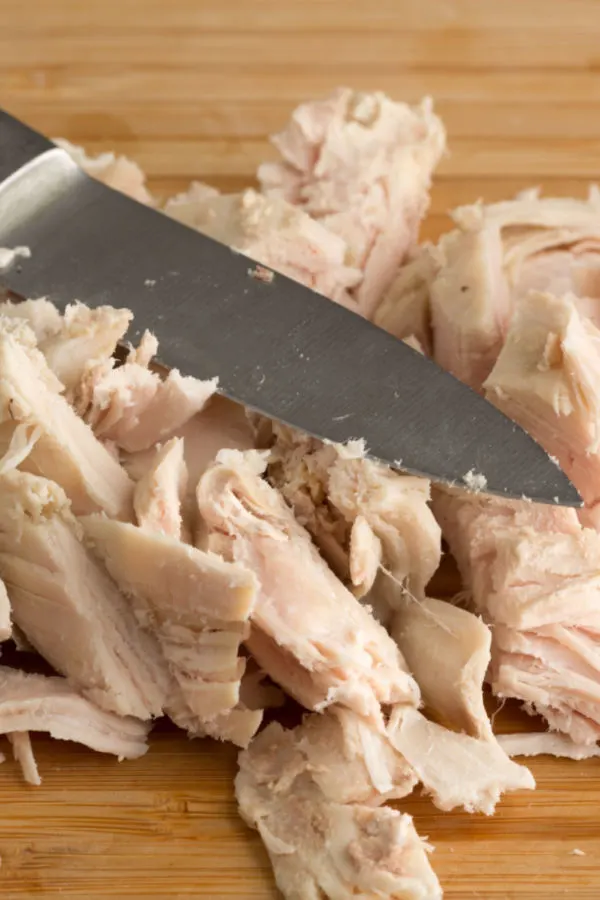
INSTRUCTIONS
In a large stock pot heat butter over medium heat. Once melted add the diced onion and saute for 4 minutes, stirring frequently.
Add minced garlic and flour and stir for 1 minute. Then add the flour and stir for another minute.
Pour in 2 cups of the broth and then deglaze the bottom of the pot with a wooden spatula. Whisk the broth so that there are no clumps of flour visible.
Next add sage, thyme, potatoes, carrots, celery, the remaining broth, bay leaf, and turkey. Bring the mixture to a boil and then reduce the heat to a simmer. Let the mixture simmer until the carrots and potatoes are tender, approximately 12-15 minutes.
Stir in the milk and simmer for 5 minutes. Discard the bay leaf, and season with salt and pepper to taste.
Common Recipe Substitutions
1. Vegetables & Beans
As mentioned above you can use whatever vegetables that you prefer or have on hand. Below I have listed some of the most common vegetables that are included in leftover turkey stew.
I have also included common types of beans that are used as well.
- Potatoes – Yukon gold, Red or Russet potatoes
- Onions – Sweet, White or Yellow onions
- Carrots – Baby Carrots, Sliced whole carrots or frozen carrots
- Celery – Sliced fresh celery
- Corn – Drained canned corn or frozen corn
- Green beans – Fresh, canned or frozen green beans
- Other Beans – Lima beans, Butter beans, Garbanzo, White Northern, etc..
- Root Vegetables – Turnips, parsnips, rutabagas, golden beets
- Squash – Yellow Squash, Zucchini, Butternut Squash
- Leafy Greens – Kale, Spinach, Collard Greens
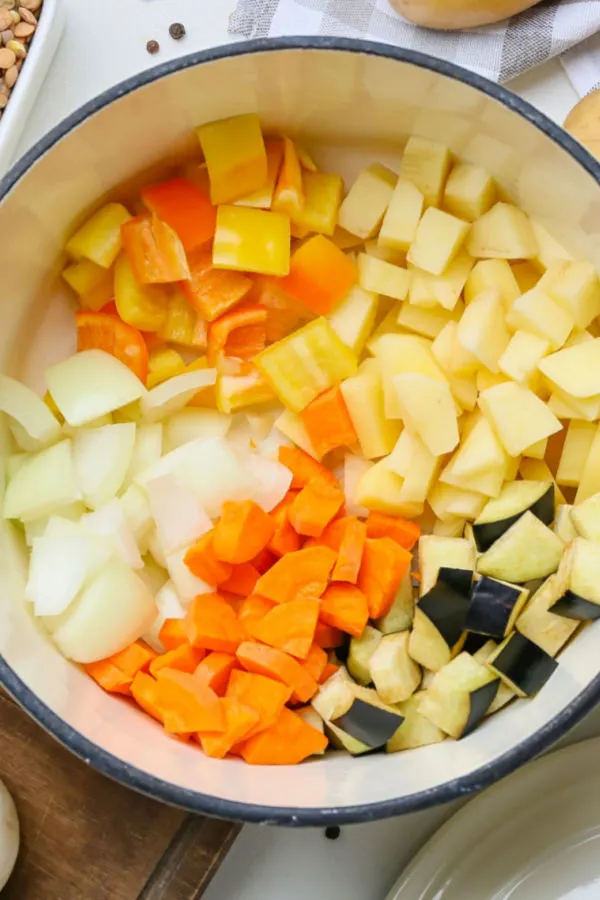
2. Liquid
Broth – Although the recipe calls for chicken broth, feel free to use whatever broth that you prefer. Vegetable broth and beef broth will add great flavor to the stew.
And if you have turkey broth on hand, you can definitely use that as well. In fact, you can make your own turkey broth by following this Chicken Stock recipe and instead of using the carcass of a chicken, use turkey bones instead.
It is a great way to get a ton of flavor from something that you were most likely going to throw away. After you make it, be sure to freeze the remaining broth for use in other recipes throughout the winter.
Milk – To make the Leftover Turkey Stew take on that slightly creamy texture, I add milk at the end of the recipe. However, you could also use heavy cream, half and half, Almond or Soy milk instead.
3. Seasonings
To take on that iconic Thanksgiving flavor, I use both dry sage and thyme in the stew. However, if you have poultry seasoning on hand, it is a great time to use that as a substitution.
In place of the half of teaspoon of sage and thyme, use 1 teaspoon of dry poultry seasoning. Then after tasting the stew add additional salt and pepper as desired.
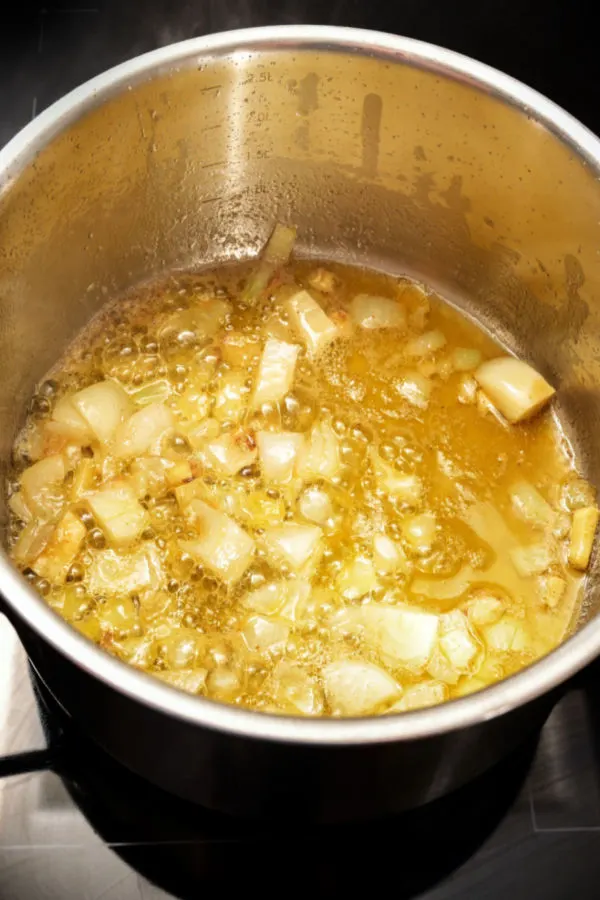
Of course if you have fresh sage and thyme leftover from your Thanksgiving dishes, you can add them in as well. As a general guideline, you need to use 3 times the amount of fresh herbs when compared to dried herbs.
Therefore, you will need 1 1/2 teaspoons of chopped fresh sage and 1 1/2 teaspoons of chopped fresh thyme in this recipe.
Another common way to ramp up the flavor of this leftover turkey stew is to add a dash of cayenne pepper and/or hot pepper flakes to the mixture as it cooks. The spices will ramp up the other flavors as well as giving you a slight bit of heat as well.
4. Meat
If you don’t have any leftover turkey, you can use leftover chicken instead. It is a great recipe to make with a store-bought rotisserie chicken!
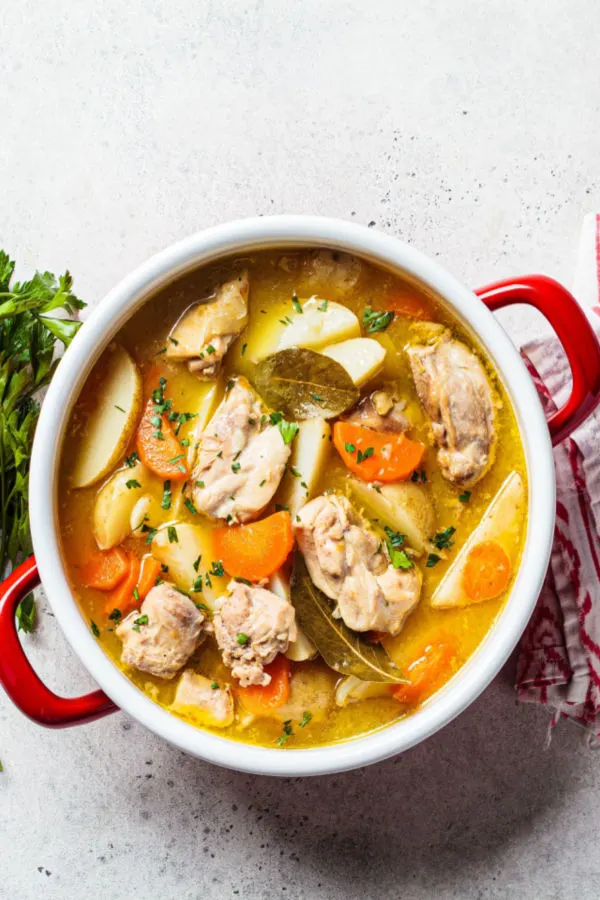
Other Leftover Turkey Recipes
If you find yourself with a lot of leftover turkey, here are some other recipes that you will love.
- Leftover Turkey Pot Pie
- Instant Pot Southwestern Turkey Soup
- Instant Pot Turkey Tetrazzini
- Leftover Turkey Burgers
- Kentucky Hot Brown Dip
- Instant Pot Turkey Noodle Casserole
- Turkey Chili
- Turkey Noodle Casserole For Two
Of course, you can never beat having a turkey sandwich the day after Thanksgiving! Top it with a little warm dressing and a scoop of cranberry sauce for a complete Turkey Day sandwich.
Enjoy! Mary

To receive our 3 Recipe Articles in your inbox each week, sign up for our free email list located in the middle of each recipe or email me at contact@makeyourmeals.com. You can also follow us on Facebook and Pinterest. This article may contain affiliate links where a small commission is paid if you purchase a product at no additional cost to you.
Leftover Turkey Stew

Use leftover turkey meat to make this delicious and healthy stew recipe.
Ingredients
- ¼ cup butter
- 1 onion diced
- 1 clove garlic, minced
- ¼ cup flour
- 1/2 teaspoon sage
- 1/2 teaspoon thyme
- 5 cups chicken broth
- 4 medium Yukon gold potatoes, cut into 1-2 inch sections
- 8 baby carrots, cut into thick chunks
- 2 ribs celery, sliced
- 1 bay leaf
- 2-3 cups cooked turkey, diced
- 1/2 cup milk
Instructions
In a large stock pot heat butter over medium heat. Once melted add the diced onion and saute for 4 minutes, stirring frequently.
Add minced garlic and flour and stir for 1 minute.
Add the flour and stir for 1 minute. Add 2 cups of the broth and deglaze the bottom of the pot with a wooden spatula. Whisk the broth so that there are no clumps of flour visible.
Add sage, thyme, potatoes, carrots, celery, remaining broth, bay leaf, and turkey. Bring the mixture to a boil and then reduce the heat to a simmer. Let the mixture simmer until the carrots and potatoes are tender, approximately 12-15 minutes.
Stir in the milk and simmer for 5 minutes.
Discard bay leaf, and season with salt and pepper to taste.
Notes
Substitute 1 teaspoon poultry seasoning for the sage/thyme.
Add 1/4 teaspoon cayenne pepper to increase the flavor.
Optional Ingredients: frozen peas or frozen green beans. Add them during the last 5 minutes of cooking and serve when they are heated through.
Recipe provided by Make Your Meals
Nutrition Information:
Yield:
6Amount Per Serving: Calories: 487Total Fat: 19gSaturated Fat: 8gTrans Fat: 0gUnsaturated Fat: 9gCholesterol: 173mgSodium: 1013mgCarbohydrates: 34gFiber: 4gSugar: 5gProtein: 44g
Nutritional Information is to be used as a general guideline only . Nutritional calculations will vary from the types and brands of the products used.
